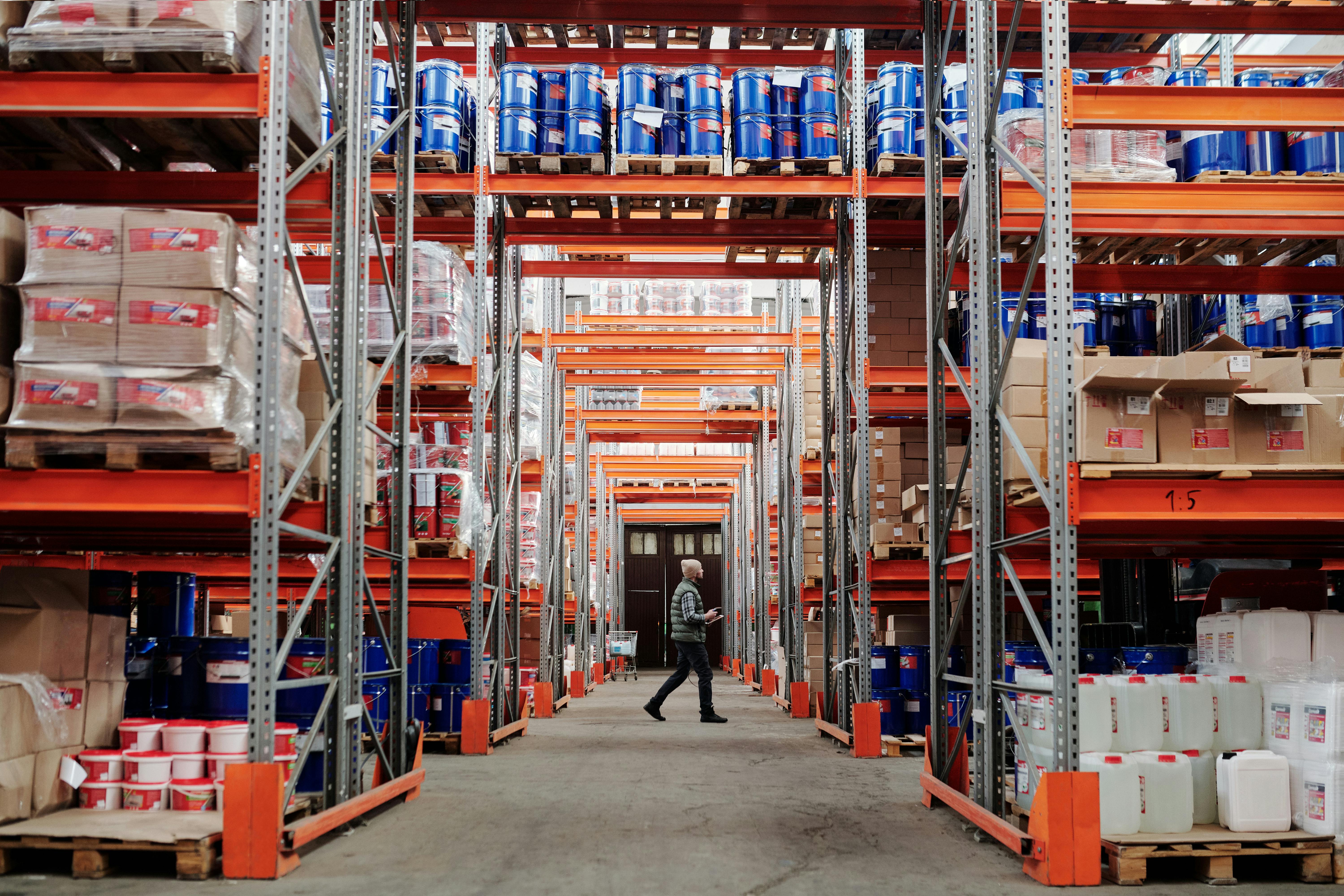Imagine having a furry bundle of joy in your home - a playful and curious puppy! As you embark on this exciting journey of pet parenthood, it's essential to equip yourself with knowledge about crate training. Crate training offers countless benefits for both you and your puppy, helping establish a routine, providing a safe space, and aiding in potty training. So, let's dive into the importance of crate training for your puppy and discover how it can create a harmonious environment for the newest member of your family.

This image is property of images.pexels.com.
Benefits of Crate Training
Provides a Safe Space for Your Puppy
One of the main benefits of crate training is that it provides a safe and secure space for your puppy. The crate becomes their own little den where they can retreat to whenever they feel overwhelmed or tired. It gives them a sense of security and comfort, much like a cozy bedroom for humans. This safe space is particularly important for puppies who may feel anxious or scared in unfamiliar environments.
Prevents Destructive Behavior
Crate training can also help prevent destructive behavior in your puppy. When left unsupervised, puppies can be quite mischievous, chewing on furniture, shoes, or electrical cords. By confining them to a crate when you cannot directly supervise them, you are preventing them from engaging in destructive habits that could potentially harm them or damage your belongings.
Aids in Housebreaking
Housebreaking, or potty training, is often a challenging task for puppy owners. However, crate training can greatly aid in the housebreaking process. Dogs naturally avoid soiling their living spaces, and crate training takes advantage of this instinct. By keeping your puppy in a properly sized crate, you are teaching them to hold their bladder and bowels until you take them outside. This accelerates the housebreaking process and helps build good bathroom habits.
Reduces Anxiety
Many puppies experience separation anxiety or general anxiety when left alone. Crate training can help alleviate this anxiety by providing a secure and familiar space for your puppy. Being confined to a cozy crate makes them feel protected, reducing anxiety and stress levels. With time, your puppy will associate the crate with positive feelings, making it an effective tool for managing anxiety.
Facilitates Traveling
If you enjoy traveling and wish to take your furry friend along, crate training is essential. Crate-trained puppies are more comfortable and secure during travel, whether it's a car journey or a flight. The crate becomes a familiar space for your puppy amidst the unfamiliarity of different environments. It also ensures their safety during transportation, preventing them from wandering or getting injured.
Choosing the Right Crate
Size and Space
When choosing a crate for your puppy, it's crucial to consider their size and the amount of space they need. The crate should be large enough for your puppy to stand up, turn around, and lie down comfortably. However, it should not be excessively spacious, as this may encourage them to use one corner as a bathroom area. As your puppy grows, you may need to upgrade to a larger crate to accommodate their size.
Material and Durability
Crate materials vary, including wire, plastic, and fabric options. Each has its own advantages and disadvantages. Wire crates are sturdy, allow better airflow, and are easy to clean. Plastic crates are more enclosed, providing a sense of security, but can become hot and stuffy if not well-ventilated. Fabric crates are lightweight and portable but may not be suitable for puppies who like to chew. Consider your puppy's needs and preferences when selecting the material and ensure the crate is durable and built to last.
Safety Considerations
Safety should be a top concern when choosing a crate for your puppy. Look for crates with secure latches or locks to prevent accidental escapes. Ensure that there are no sharp edges or protrusions that could harm your puppy. Additionally, consider the crate's location to minimize potential hazards, such as placing it away from electrical cords or other dangerous items. Ultimately, the chosen crate should provide a safe and secure environment for your puppy.
Crate Accessories
To enhance your puppy's comfort and enjoyment of their crate, consider adding accessories. A cozy bed or blanket can provide a soft resting surface. Toys or chew treats can help keep them occupied and entertained while confined. Additionally, using a crate cover or placing the crate in a quiet area can create a more den-like atmosphere, further promoting a positive association with the crate.
Introducing the Crate to Your Puppy
Making the Crate Inviting
To make the crate inviting and appealing to your puppy, it's important to create a positive association with it. Start by placing the crate in a comfortable and familiar area of your home. Make sure it is well-ventilated and easily accessible. Line the crate with a soft blanket or bed to make it cozy and comfortable. Introduce your puppy to the crate in a calm and positive manner, allowing them to explore and investigate it at their own pace.
Positive Association
To establish a positive association with the crate, you can use treats or toys. Place a few treats inside the crate and encourage your puppy to enter on their own. Praise and reward them when they voluntarily go inside or show curiosity towards the crate. Repeat this process several times a day, gradually increasing the duration of time spent inside the crate. This positive reinforcement will help your puppy view the crate as a pleasant and enjoyable space.
Gradual Introduction
It's important to introduce the crate gradually to avoid overwhelming your puppy. Start with short periods of time, gradually increasing the duration as your puppy becomes more comfortable. Initially, you may only close the crate door for a few seconds and then gradually build up to longer intervals. The key is to make the progression slow and gentle, ensuring your puppy feels safe and relaxed inside the crate.
Patience and Consistency
Crate training requires patience and consistency. Every puppy is different, and some may adapt more quickly than others. Be patient with your puppy and avoid rushing the process. Consistency is also essential in crate training. Create a consistent routine and stick to it. This includes using the crate consistently for meals, naps, and bedtime. With time and consistency, your puppy will understand the routine and feel more comfortable in their crate.
Establishing a Crate Training Routine
Setting Regular Meal Times
To establish a routine and predictability for your puppy, it's important to set regular meal times. By feeding your puppy at specific times, you can create a schedule for bathroom breaks, as they will likely need to eliminate shortly after eating. Use the crate during meal times by placing your puppy's food inside and closing the door. This reinforces the positive association with the crate and encourages good behavior.
Creating a Relaxing Environment
To promote relaxation and comfort in the crate, it's essential to create a calming environment. Keep the crate away from loud noises or distractions that may stress your puppy. Use a crate cover or a blanket to create a cozy and den-like atmosphere. Consider placing familiar toys or a piece of clothing with your scent inside the crate to provide extra comfort and reassurance.
Using Crate for Time-outs
Crate training can also be used as a tool for time-outs when your puppy misbehaves. If your puppy becomes overly excited or engages in unwanted behavior, such as biting or excessive barking, calmly place them in the crate for a brief time-out. The crate serves as a safe space for them to calm down and reflect on their behavior. However, it's crucial to avoid using the crate as a form of punishment, as this can create negative associations.
Nighttime and Sleep Routine
Establishing a sleep routine is an integral part of crate training. The crate can serve as your puppy's designated sleeping area at night. Place the crate in your bedroom or a nearby room during the initial stages of crate training. This proximity helps your puppy feel secure and reduces nighttime anxiety. As you progress, gradually move the crate to your desired location. Ensure your puppy has gone to the bathroom before bedtime to minimize nighttime disruptions.

This image is property of images.pexels.com.
Avoiding Common Crate Training Mistakes
Using Crate as a Punishment
The crate should never be used as a form of punishment. It should always be associated with positive experiences and serve as a safe haven for your puppy. Using the crate as a punishment can create fear and anxiety, undermining the purpose of crate training. Instead, focus on reinforcing desired behaviors and providing positive reinforcement when your puppy uses the crate correctly.
Leaving Puppy Crated for Excessive Hours
While crate training is beneficial, it's essential to avoid leaving your puppy crated for excessive periods. Puppies have small bladders and need frequent bathroom breaks. As a general guideline, puppies can typically hold their bladder for about an hour per month of age, up to a maximum of 6 to 8 hours. If you need to be away for longer periods, consider having someone let your puppy out or arrange for a dog walker.
Neglecting Crate Maintenance
Proper crate maintenance is crucial for your puppy's health and well-being. Keep the crate clean and free from any soiling or odors. Regularly wash the bedding or blanket inside the crate to maintain hygiene. If accidents occur, clean them promptly to prevent unpleasant smells and potential health risks. Neglecting crate maintenance can lead to discomfort for your puppy and also undermine their positive association with the crate.
Inconsistent Training
Consistency is key when it comes to crate training. Inconsistency can confuse your puppy and make the training process longer and more challenging. Make sure all family members are on the same page and follow the same rules and routines. This includes using the crate consistently for meal times, naps, and bedtime. Consistent training will help reinforce good behaviors and establish a positive crate experience.
Crate Training for Housebreaking
Utilizing Crate for Schedule Management
Crate training plays a significant role in housebreaking your puppy. By utilizing the crate for schedule management, you can establish a routine and control your puppy's bathroom habits. When not directly supervised, place your puppy in the crate, ensuring they have ample space to stand, turn, and lay down comfortably. Take them outside to a designated bathroom area at regular intervals, such as after meals, playtime, or naps, to encourage appropriate elimination.
Developing a Toilet Training Routine
Consistency is paramount when housebreaking your puppy. Develop a toilet training routine that complements the use of the crate. Take your puppy outside to the designated bathroom area immediately upon their release from the crate. Use verbal cues, such as "go potty" or "do your business," to signify the purpose of the outing. Reward your puppy with praise and treats when they eliminate in the correct area, reinforcing the desired behavior.
Preventing Accidents
The crate is a valuable tool in preventing accidents inside your home. Whenever you cannot directly supervise your puppy, place them in the crate to discourage inappropriate elimination. Puppies naturally avoid soiling their living spaces, and the confined space of the crate encourages them to hold their bladder and bowels until taken outside. By consistently using the crate and rewarding proper elimination, you are effectively preventing accidents and promoting good bathroom habits.
Reinforcing Desired Behavior
Successful housebreaking relies on positive reinforcement and consistency. Every time your puppy eliminates in the designated area outside, provide enthusiastic praise and reward them with treats or playtime. This positive reinforcement strengthens the association between proper elimination and reward, encouraging your puppy to repeat the desired behavior. As your puppy becomes more reliable in their bathroom habits, gradually decrease the reliance on the crate and allow them more freedom indoors.

This image is property of images.pexels.com.
Addressing Separation Anxiety
Creating a Positive Association with Crate
For puppies experiencing separation anxiety, crate training can be a useful tool in managing their anxiety. Create a positive association with the crate by incorporating it into enjoyable activities, such as feeding meals or offering special toys. Gradually introduce the concept of separation by leaving your puppy in the crate for short periods while you are at home. This helps them understand that being confined to the crate does not always mean you are leaving them alone.
Gradual Alone Time
Addressing separation anxiety requires gradually increasing the duration of time your puppy spends alone. Begin with short intervals and gradually progress to longer periods, always ensuring your puppy is comfortable and calm. During the alone time, provide comforting items, such as a blanket with your scent or a favorite toy, to help alleviate anxiety. Be patient and avoid rushing the process, as it may take time for your puppy to become accustomed to being alone.
Using Comforting Items
Comforting items, such as a blanket or toy, can provide additional support for puppies with separation anxiety. The scent of your presence on the blanket or the familiarity of a cherished toy can provide comfort and reassurance when your puppy is alone in the crate. These items serve as a substitute for your physical presence and can help reduce anxiety levels.
Seeking Professional Help
If your puppy's separation anxiety persists or worsens despite your best efforts, it may be beneficial to seek professional help. A qualified trainer or behaviorist can provide guidance tailored to your puppy's specific needs. They can help develop a customized plan to address separation anxiety and provide additional strategies and techniques to support your puppy's emotional well-being.
Traveling with Your Crate-Trained Puppy
Safety During Car Journeys
When traveling with your crate-trained puppy in a car, safety should be a top priority. Secure the crate properly in the car to prevent it from shifting or tipping over during sudden stops or turns. Use a seatbelt or specialized crate attachment to ensure the crate remains in place. Avoid placing the crate in areas of the car that could be impacted by airbags. Additionally, provide your puppy with ample ventilation and never leave them unattended in the car, especially in hot weather.
Planning for Accommodations
If you plan to stay overnight at accommodations, ensure they are pet-friendly and allow crated dogs. Contact the places you'll be staying in advance to ensure they can accommodate your furry friend. Provide your puppy with their familiar crate, bedding, and comforting items to create a sense of familiarity and security in the new environment.
Familiarizing with Different Environments
Crate training prepares your puppy for different environments and helps them feel more comfortable during travel. Familiarize your puppy with their crate in various settings, gradually exposing them to different environments. Start with short trips around the neighborhood and gradually extend the duration and distance of the journeys. This exposure helps your puppy feel more secure in unfamiliar environments, making travel experiences less stressful.
Ensuring Comfort and Security
When traveling with your crate-trained puppy, it's important to ensure their comfort and security. Pack familiar bedding, toys, and comforting items to provide a sense of familiarity. Maintain a consistent routine during the travel period, including meal times, potty breaks, and exercise. Carve out breaks for your puppy to stretch their legs, have a bathroom break, and engage in some playtime. By prioritizing comfort and security, you can help make the travel experience enjoyable for both you and your puppy.
Transitioning from Crate to Freedom
Gradual Freedom Introduction
Once your puppy has successfully adapted to the crate, you can begin introducing them to more freedom in the house. Start by gradually increasing their supervised time outside the crate. Allow them to explore a small area while closely monitoring their behavior. If they exhibit good behavior and show no signs of destructive behavior or accidents, gradually expand their freedom to larger areas of the house. However, always be attentive during this transition period.
Supervised Time Outside Crate
During the transition period, provide your puppy with supervised time outside the crate. This allows them to explore their surroundings under your watchful eye. Pay close attention to their behavior, ensuring they do not engage in any unwanted behaviors or have accidents. If you are unable to directly supervise, confine them to a safe area with baby gates or use a crate for short periods until they are fully accustomed to more freedom.
Baby-gating and Restricted Areas
Baby-gating and creating restricted areas can be useful in the transition from crate to freedom. Use baby gates to section off areas of the house where your puppy may encounter hazards or where you prefer they not have access. This allows your puppy to gradually explore the house while ensuring their safety and preventing destructive behavior. Supervise their behavior in these areas until you are confident they will make appropriate choices.
Monitoring Behavior
As you transition your puppy from the crate to freedom, it's essential to monitor their behavior closely. Observe their interactions with the environment, other pets, or family members. Redirect any unwanted behaviors and reinforce positive ones. Promptly address any accidents or destructive behavior and continue to provide positive reinforcement when your puppy makes appropriate choices. Consistency and attentive monitoring are key to successfully transitioning your puppy to more freedom.
Maintaining a Positive Crate Experience
Using Crate as a Relaxation Spot
Even after your puppy has gained more freedom, it's important to maintain the crate as a relaxation spot. Introduce the crate as a place where your puppy can go voluntarily to relax and unwind. Leave the crate door open during the day, allowing your puppy to enter and exit as they desire. This helps reinforce the positive association with the crate and ensures it remains a comforting and safe space for your furry friend.
Rewarding Good Behavior
Positive reinforcement is fundamental in maintaining a positive crate experience for your puppy. Continually reward good behavior, such as voluntarily entering the crate, settling down quietly, or keeping accidents to a minimum. Praise your puppy, offer treats, or give them a favorite toy as a reward. This reinforces the positive association with the crate and encourages your puppy to continue exhibiting desirable behaviors.
Regular Cleaning and Maintenance
Proper cleaning and maintenance of the crate are important for maintaining a positive experience for your puppy. Ensure the crate is kept clean, removing any soiling or odors promptly. Regularly wash the bedding or blanket inside the crate to maintain hygiene. By providing a clean and comfortable environment, you contribute to the positive association your puppy has with the crate.
Continued Training and Reinforcement
Even after your puppy has been successfully crate trained, it's important to continue training and reinforcement. Reinforce good behaviors through consistent rewards and praise. Occasionally use the crate for meal times or relaxation periods to reinforce its purpose and maintain your puppy's comfort with it. Regular training sessions will help solidify the crate training and ensure its ongoing effectiveness.
In conclusion, crate training has numerous benefits for both puppies and their owners. It provides a safe space, prevents destructive behavior, aids in housebreaking, reduces anxiety, and facilitates traveling. When choosing the right crate, consider the size and space, material and durability, safety considerations, and crate accessories. Introduce the crate gradually, making it inviting and creating positive associations. Establish a crate training routine by setting regular meal times, creating a relaxing environment, using the crate for time-outs, and establishing a nighttime sleep routine. Avoid common crate training mistakes such as using the crate as punishment and neglecting crate maintenance. Utilize crate training for housebreaking by utilizing it for schedule management, developing a toilet training routine, preventing accidents, and reinforcing desired behavior. Address separation anxiety by creating positive associations, introducing gradual alone time, using comforting items, and seeking professional help if necessary. When traveling with your crate-trained puppy, prioritize safety during car journeys, plan for accommodations, familiarize them with different environments, and ensure comfort and security. When transitioning from crate to freedom, gradually introduce more freedom, monitor behavior, and create restricted areas if needed. Finally, maintain a positive crate experience by using the crate as a relaxation spot, rewarding good behavior, regular cleaning and maintenance, and continued training and reinforcement. With patience, consistency, and a positive approach, crate training can be a successful and beneficial experience for both you and your puppy.


